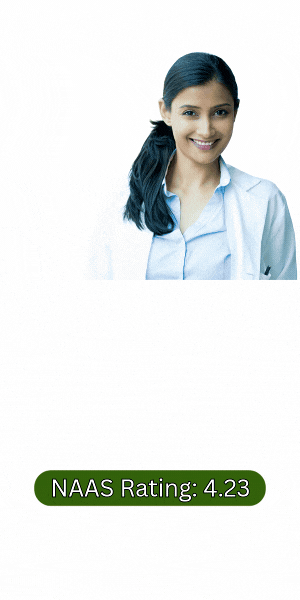
Brazil is one of the world’s leading countries in agricultural production and research. From soybeans and coffee to livestock and sustainable farming, Brazil has made significant contributions to global food security. To support and evaluate this research, the country uses a journal classification system known as Qualis Capes. This blog explains how Qualis Capes indexing works and why it has become increasingly important for agricultural researchers in Brazil.
Qualis Capes is a journal evaluation and classification system developed by CAPES (Coordination for the Improvement of Higher Education Personnel), a government agency under Brazil’s Ministry of Education. Its main purpose is to assess the quality of academic journals used in postgraduate research.
Journals are evaluated based on several factors, including:
They are then classified into quality tiers: A1, A2, B1, B2, B3, B4, B5, and C
Higher categories such as A1 and A2 represent stronger international impact, while B-category journals remain respected and valuable, especially within specific research areas.
In Brazil, academic and research success is closely tied to Qualis Capes rankings. For researchers in agriculture and environmental sciences, publishing in journals with strong Qualis ratings leads to better visibility, more funding opportunities, and greater academic recognition.
Key reasons why Qualis Capes is crucial in agricultural research:
Brazilian scholars often choose journals not only based on the subject fit but also on their Qualis Capes rating. In agricultural research fields such as agronomy, soil science, horticulture, and environmental management, journal selection is closely aligned with CAPES standards.
To meet these expectations, journals are continually improving their editorial practices by:
The International Journal of Environmental and Agriculture Research (IJOEAR) is currently indexed in the Qualis Capes system under the B category. This makes it a valuable option for Brazilian researchers working in areas like:
IJOEAR combines peer-reviewed content, open access publishing, and global visibility—making it a practical and recognized platform for researchers seeking a balance between quality and accessibility.
While Qualis Capes encourages high-quality research, it also introduces several challenges:
Despite these challenges, many researchers choose B-category journals like IJOEAR to fulfill academic requirements while ensuring timely and relevant publication of their work.
Qualis Capes indexing is shaping the future of agricultural research publishing in Brazil. For researchers and postgraduate students, understanding this system is essential when selecting journals. Journals in the B category, like IJOEAR, continue to support quality research by providing accessible and recognized publishing opportunities in an evolving academic landscape.
1. What is Qualis Capes?
Qualis Capes is a Brazilian journal evaluation system used by CAPES to classify academic journals. It helps assess the quality of research published by postgraduate programs in Brazil.
2. Why is Qualis Capes important for agricultural research in Brazil?
Qualis Capes rankings influence academic credibility, research funding, and postgraduate program evaluations. Publishing in a Qualis-ranked journal is important for career growth and institutional recognition.
3. What are the Qualis journal categories?
Journals are ranked as A1, A2, B1, B2, B3, B4, B5, and C. A1 and A2 represent the highest quality, while B-category journals are still respected, especially in niche research fields.
4. Is IJOEAR recognized by Qualis Capes?
Yes, the International Journal of Environmental and Agriculture Research (IJOEAR) is indexed in the B category of Qualis Capes, making it a credible option for researchers in Brazil.
5. Can I publish in B-category journals like IJOEAR and still meet CAPES requirements?
Yes, many Brazilian researchers choose B-category journals like IJOEAR because they are recognized, peer-reviewed, and often offer faster and more accessible publication options.
6. Do Qualis Capes journals need to be in English?
Not necessarily, but many high-ranking journals publish in English to reach international readers and improve visibility.
7. How does Qualis Capes affect funding opportunities?
Funding agencies in Brazil prefer research published in well-ranked Qualis journals. Higher rankings often improve chances of receiving grants and institutional support.
8. Are there enough A1 and A2 journals in agriculture?
No, one challenge is the limited number of A-category journals in specific agricultural subfields. That’s why B-category journals still play a significant role.
9. How often is the Qualis list updated?
CAPES updates the Qualis list periodically, often every few years, based on new evaluation criteria and journal performance.
10. What makes a journal move up in Qualis rankings?
Journals can improve their Qualis category by enhancing peer review, increasing international visibility, maintaining ethical publishing standards, and being indexed in databases like Scopus or Web of Science.
 NAAS Rating: 4.23
NAAS Rating: 4.23  October 2025 Issue
October 2025 Issue  Impact Factor: 6.69
Impact Factor: 6.69  Submit Article
Submit Article 
|
Citation Indices
|
All
|
Since 2020
|
|
Citation
|
6164
|
5117
|
|
h-index
|
31
|
29
|
|
i10-index
|
201
|
165
|
|
Acceptance Rate (By Year)
|
|
|
Year
|
Percentage
|
|
2024
|
11.09%
|
|
2023
|
15.23%
|
|
2022
|
12.81%
|
|
2021
|
10.45%
|
|
2020
|
9.6%
|
|
2019
|
14.3%
|
|
2018
|
17.65%
|
|
2017
|
16.9%
|
|
2016
|
22.9%
|
|
2015
|
26.1%
|